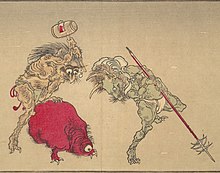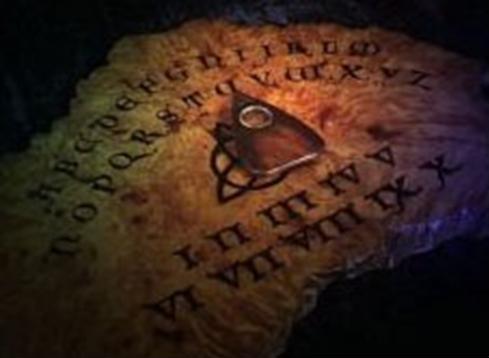Photo Credit: Google Images
Salam Sejahtera untuk semua. Saya biasa disapa dengan sebutan Day. Peristiwa ini terjadi saat saya masih belum memahami tentang dunia ghaib. Disebuah Rumah Sakit yang cukup ternama di Jakarta konon ada sebuah cerita tentang seorang gadis remaja yang tewas karena suatu peristiwa dimana saat itu mengejutkan seluruh orang yang ada didalam rumah sakit.
Singkat cerita, pada suatu malam, saat itu saya sedang menjenguk saudara yang sakit (tepat malam Jumat kliwon dalam kondisi hujan deras diluar). Saat itu waktu menunjukkan pukul 00.30, hujan pun reda. Disaat itu saya tidak bisa tertidur dan ingin mencari makanan diluar, namun sudah tidak bisa karena lift serta tangga darurat telah ditutup. Akhirnya saya putuskan untuk tetap didalam rumah sakit namun diluar kamar.
Seketika, disaat saya sedang duduk santai sekaligus mendengarkan musik, saya mendengar suara aneh dari kamar depan tempat saya duduk, seperti orang minta tolong, namun saya tidak memperdulikannya karena saya pikir hanya suara angin saja. Tapi suara itu makin lama semakin jelas. Akhirnya saya putuskan untuk menghampiri kamar tersebut. Akan tetapi pintu kamar tersebut terkunci dan sulit untuk dibuka, walaupun sudah saya dobrak sekeras mungkin alhasil sia-sia.
Disaat itu pula saya mendengar suara telapak kaki berjalan di ujung lorong tersebut menghampiri saya, namun tidak ada siapapun dilorong setengah gelap itu kecuali saya sendri. Tanpa pikir panjang lagi saya berlari menuju tangga darurat yang ada di ujung lorong dengan mendobrak pintu tangga tersebut (karena sudah terkunci), dengan maksud meminta bantuan kepada security.
Setelah sampai dipos security saya menceritakan kejadian yang saya alami, namun security hanya diam saja. Lalu dia menceritakan yang sebenarnya bahwa kamar tersebut telah lama dikosongkan karena meninggalnya seorang gadis remaja, yang sejak saat itu ketika malam Jumat terutama kliwon ada suara gadis minta tolong. Oleh karena itu bila malam Jumat datang tidak ada seorangpun yang berada dilorong lantai satu itu, baik perawat, security, maupun pengunjung.
Akhirnya saya duduk terdiam membisu mendengar cerita tersebut. Saya pun diberikan minum dan roti oleh security serta sayapun merokok sebatang untuk menenangkan pikiran serta memikirkan apa yang telah saya alami. Dengan tekad yang kuat saya putuskan untuk memahami lebih dalam lagi tentang dunia ghaib dengan bantuan abang, kakek, dan uwa saya.
Mereka pun memberikan bekal kepada saya hingga saat ini, serta menasehati "Walaupun saya sudah memiliki bekal yang cukup tapi dunia ghaib bukanlah sembarangan dan makhluk yang hidup disana bukanlah sembarang makhluk karena mereka dapat melihat kita sedang kita tidak dapat melihat mereka. Maka itu buanglah kesombongan pada diri karena diatas langit masih ada langit dan ambillah sifat padi".
- Kiriman cerita dari Day
Singkat cerita, pada suatu malam, saat itu saya sedang menjenguk saudara yang sakit (tepat malam Jumat kliwon dalam kondisi hujan deras diluar). Saat itu waktu menunjukkan pukul 00.30, hujan pun reda. Disaat itu saya tidak bisa tertidur dan ingin mencari makanan diluar, namun sudah tidak bisa karena lift serta tangga darurat telah ditutup. Akhirnya saya putuskan untuk tetap didalam rumah sakit namun diluar kamar.
Seketika, disaat saya sedang duduk santai sekaligus mendengarkan musik, saya mendengar suara aneh dari kamar depan tempat saya duduk, seperti orang minta tolong, namun saya tidak memperdulikannya karena saya pikir hanya suara angin saja. Tapi suara itu makin lama semakin jelas. Akhirnya saya putuskan untuk menghampiri kamar tersebut. Akan tetapi pintu kamar tersebut terkunci dan sulit untuk dibuka, walaupun sudah saya dobrak sekeras mungkin alhasil sia-sia.
Disaat itu pula saya mendengar suara telapak kaki berjalan di ujung lorong tersebut menghampiri saya, namun tidak ada siapapun dilorong setengah gelap itu kecuali saya sendri. Tanpa pikir panjang lagi saya berlari menuju tangga darurat yang ada di ujung lorong dengan mendobrak pintu tangga tersebut (karena sudah terkunci), dengan maksud meminta bantuan kepada security.
Setelah sampai dipos security saya menceritakan kejadian yang saya alami, namun security hanya diam saja. Lalu dia menceritakan yang sebenarnya bahwa kamar tersebut telah lama dikosongkan karena meninggalnya seorang gadis remaja, yang sejak saat itu ketika malam Jumat terutama kliwon ada suara gadis minta tolong. Oleh karena itu bila malam Jumat datang tidak ada seorangpun yang berada dilorong lantai satu itu, baik perawat, security, maupun pengunjung.
Akhirnya saya duduk terdiam membisu mendengar cerita tersebut. Saya pun diberikan minum dan roti oleh security serta sayapun merokok sebatang untuk menenangkan pikiran serta memikirkan apa yang telah saya alami. Dengan tekad yang kuat saya putuskan untuk memahami lebih dalam lagi tentang dunia ghaib dengan bantuan abang, kakek, dan uwa saya.
Mereka pun memberikan bekal kepada saya hingga saat ini, serta menasehati "Walaupun saya sudah memiliki bekal yang cukup tapi dunia ghaib bukanlah sembarangan dan makhluk yang hidup disana bukanlah sembarang makhluk karena mereka dapat melihat kita sedang kita tidak dapat melihat mereka. Maka itu buanglah kesombongan pada diri karena diatas langit masih ada langit dan ambillah sifat padi".
- Kiriman cerita dari Day
Source: Cerita Misteri Indo






























